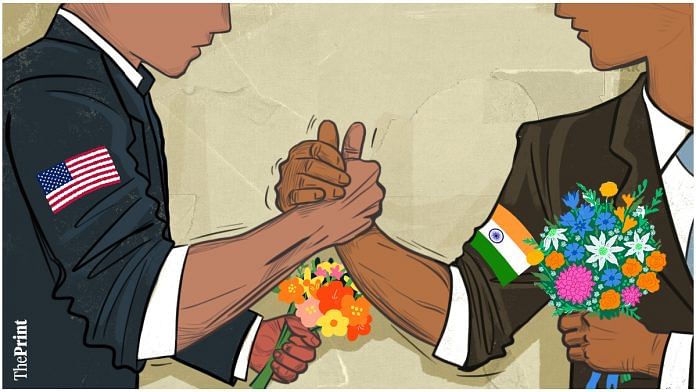Over and above the formal pomp and razzmatazz associated with the Prime Minister’s state visit to the US, it is worth asking: Which of the many events of the past few days were relatively more important? Narendra Modi leading yoga exercises at the UN; the General Electric-Hindustan Aeronautics partnership to make fighter aircraft engines; the new tune on India by some leading Western publications; or the giant orders for killer drones and commercial aircraft.
Broadly, these demonstrate either soft or hard power. As an example of the former, the influential Economist in its issue last week ran half a dozen stories in an India “package” — including a cover on “indispensable” India as America’s “new best friend”, Mr Modi as the world’s most popular leader, the Indian diaspora as the biggest and most influential in history, and the increasingly material defence and security ties — and gave the external affairs minister the kind of space otherwise reserved for a Henry Kissinger. Perceptions have changed when a publication with prolonged scepticism about Indian boosterism does some boosterism of its own.
But questions can be asked. For example, is the Indian diaspora evidence of Indian or American soft power? To be sure, Indians in the US lobbied for the nuclear deal 15 years ago, and are now numerous and wealthy enough to matter to US politicians. But one could argue that it would be more truly Indian soft power if the best and brightest Americans came to study in Indian universities and then queued up to get Indian passports.
When it is the other way round, with the most privileged Indians sold on US universities, the opportunities in America’s tech companies, the might of its financial system, and the country’s assimilative nature, not to speak of the ease of living and the appeal of American popular culture, what is really on display is American soft power. That indirectly reflects the inadequacies of the Indian system, which many Indian dollar-millionaires are leaving for the attractions of a Dubai in the desert.
So what is really at work in the bilateral relationship is hard power: India’s growing military and economic clout, and the potential of its market. The eye-popping aircraft orders by IndiGo and Air India are only one manifestation of this. As everyone knows, India’s is the world’s fifth-largest economy and likely to become the third-largest before too long. The Indian economy is only 15 per cent of the US’ in size, but its contribution to world growth is 60 per cent of the US’ because it is growing four times as fast this year.
Also read: Freebie culture may garner electoral triumphs, but India can hardly sustain resulting public debt
India’s military too matters, especially in the Indian Ocean, where it can counter China’s expanding navy — aided by the surveillance and attack capabilities of a dozen American Poseidon aircraft and the 31 SeaGuardian drones being ordered. India’s defence budget is the world’s fourth-largest, and it is the world’s biggest defence importer. Many Western companies see a brighter future if they get in here — like General Electric, which, with HAL, will make engines in India for the Tejas, Mark 2, and France’s Dassault, which hopes to bag an order for 50-plus additional Rafales, half of them for the new Vikrant aircraft carrier.
India can therefore afford to be more assertive in its foreign policy, thumb a nose at the West when it buys Russian oil, ignore muted Western concerns about its authoritarian, anti-minority turn, and find its way step by step into key international clubs from which it has been excluded so far.
On the other side of the equation, the US economy has comfortably outpaced the European Union (counting also the UK) in the last decade-plus and is now 25 per cent bigger. It is uniquely positioned as the home of the major tech companies, the source of vital technology and capital, and with a critical role when it comes to negotiating on multilateral issues like trade and climate change. So while it feels good to talk about yoga, the diaspora and other manifestations of soft power, what is really driving the relationship is hard power. What soft power does is contribute some garnish or flavouring.
By special arrangement with Business Standard.
Also read: If consumer confidence is a political bellwether, are current levels enough to help BJP win 2024?



